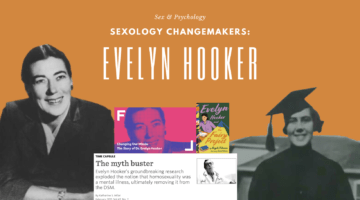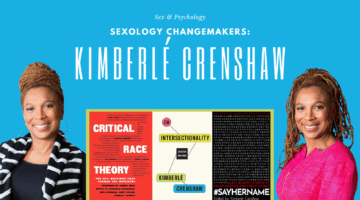Tearoom Trade And The Study Of Sex In Public Places
October 3, 2012 by Justin Lehmiller
In the not too distant past, scientists could get away with almost anything because ethics boards did not yet exist and it was up to the researchers themselves to determine what types of risks were acceptable. This resulted in the publication of a number of studies that we look back on today as being ethically dubious.
For example, a 1938 study published in the Journal of Social Psychology involved two psychologists surreptitiously hiding under college students’ dorm room beds in order to eavesdrop on their conversations [1]. I’m quite sure that if a similar study were attempted today, the researchers would be thrown in jail. But that’s just the tip of the iceberg when it comes to the history of questionable research ethics. In this article, I’m going to share one of the most fascinating and ethically ambiguous studies ever conducted in the history of sex research.
In the 1970’s, sociology doctoral student Laud Humphreys conducted the infamous Tearoom Trade Study [2]. Humphreys’ goal was to understand why so many men at that time were having anonymous sexual encounters with other men in public restrooms. In the 1970s, public toilets where men engaged in sex were often referred to as “tearooms,” hence the study’s title. Incidentally, the Russian Tea Room in New York City is not an actual tearoom so much as an expensive restaurant, so adjust your expectations accordingly if you visit. Because so many men had been arrested for tearoom sex, Humphreys thought that it would be of great societal value to understand what motivated men to engage in this behavior.
For his research, Humphreys personally visited many tearooms. He did not identify himself as a researcher while he was in the restrooms—instead, he volunteered to be the lookout (or in his words “watchqueen”) for men who wanted to get it on in a stall. As the lookout, his primary job was to cough if he saw police or strangers coming so that the guys knew when to zip up. Once the couple went into a stall, Humphreys started collecting his data, observing what went on and recording conversations that took place (which were rare and largely consisted of people whispering “Not so hard!” or “Thanks.” And, no, I’m not making any of this up). Unbeknownst to the participants in this research, Humphreys was also recording the license plate numbers of the men who drove to the tearoom.
Approximately one year after the initial study took place, Humphreys tracked down the men with the assistance of some “friendly police officers.” Humphreys carefully disguised himself (which he says consisted of wearing “one of two possible hats”), showed up at participants’ homes, and conducted a brief interview, which was supposedly part of a social health survey of men.
Humphreys’ results were fascinating and disproved common stereotypes about the typical tearoom patron. For instance, most of the men were actually married to women. Moreover, with the exception of the occasional stop for “tea,” many of these men appeared to have model marriages. After the publication of Humphreys’ research, police departments spent less time and effort prosecuting tearoom sex, an outcome that many people saw as a positive development. Think about it this way: if police resources are limited, should they be spent regulating sex between consenting adults or focused on preventing non-consensual sex crimes, such as rape and sexual assault?
Despite the knowledge we gained from Humphreys’ study and the social impact it had, it is clear that participants’ rights were violated. Not only were they deceived, but their privacy was breeched in more ways than one (although I realize some of you might argue that people who have sex in a public place have already forfeited their right to privacy–but recognize that in the 1970s, homosexuality was highly stigmatized and largely underground, so there were very few outlets for same-sex activity).
It was precisely because of studies like this that Institutional Review Boards and ethics panels were put in place in all major research universities. While some would argue that sex research is now over-regulated, most would probably agree that it’s for the best that scientists now need approval to wander into bathrooms and bedrooms in order to conduct research.
Want to learn more about Sex and Psychology ? Click here for previous articles or follow the blog on Facebook (facebook.com/psychologyofsex), Twitter (@JustinLehmiller), or Reddit (reddit.com/r/psychologyofsex) to receive updates. You can also follow Dr. Lehmiller on YouTube and Instagram.
[1] Henle, M., & Hubbell, M. (1938). Egocentricity in adult conversation. Journal of Social Psychology, 9, 227.
[2] Humphreys, L. (1970). Tearoom trade: A study of homosexual encounters in public places. London, UK: Duckworth.
Image Source: iStockphoto
Related Article:

Dr. Justin Lehmiller
Founder & Owner of Sex and PsychologyDr. Justin Lehmiller is a social psychologist and Research Fellow at The Kinsey Institute. He runs the Sex and Psychology blog and podcast and is author of the popular book Tell Me What You Want. Dr. Lehmiller is an award-winning educator, and a prolific researcher who has published more than 50 academic works.
Read full bio >


